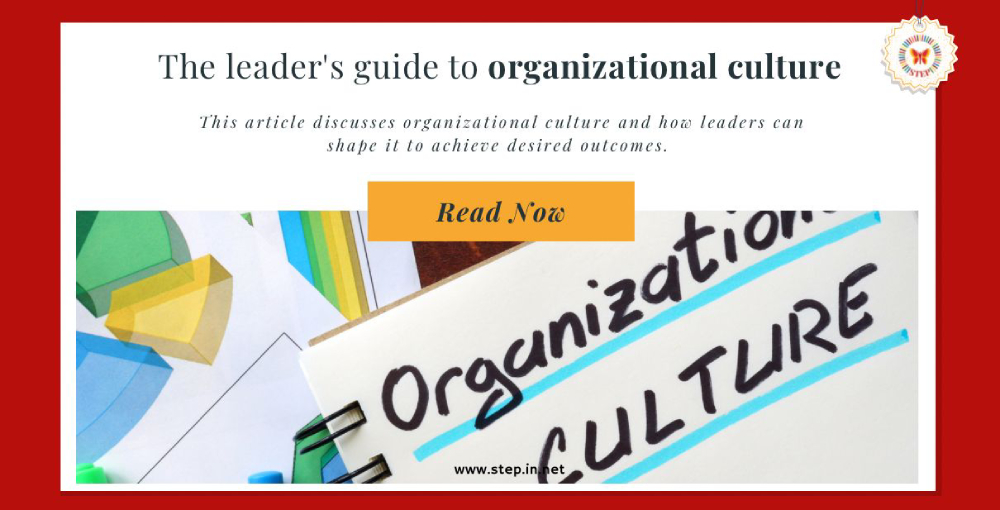A leader’s guide to organizational culture
This article discusses organizational culture and how leaders can shape it to achieve desired outcomes.
The first part of the article explains why organizational culture is important and how it affects employee behavior, motivation, and performance. The article also covers how leaders can change organizational culture to address challenges and achieve goals.
The second part will explore the distinct cultural styles and the pros and cons of each.
What is the difference between culture and strategy?
Strategy is a plan that helps people work towards the company’s goals. Effective strategy development often requires the guidance and direction of strong leaders.
Culture is how things are done in a company. Cultural norms define what is encouraged, discouraged, accepted, or rejected within a group. When the culture aligns with people’s values, it can help the company succeed. Culture is influenced by the leaders and can last a long time.
Attributes of culture:
- Shared: Culture is a group phenomenon. It cannot exist solely within a single person. It resides in shared behaviors, values, and assumptions and is experienced through the norms and expectations of a group.
- Pervasive: Organizational culture affects multiple levels of an organization, such as how people behave, the environment they work in, the things they do together, and the stories and symbols they share. It also influences their beliefs and attitudes, even if they are not always talked about openly.
- Enduring: Culture can direct the thoughts and actions of group members over the long term. People are pulled to organizations with characteristics similar to their own. Organizations are more likely to select individuals who “fit in”. Over time those who don’t fit in tend to leave.
- Implicit: People have a natural ability to understand and react to their culture without even realizing it. Culture is like a secret way of communicating within a group or company.
The Link Between Culture and Outcomes: Some dos and don’ts
- When an organization’s culture is in line with its goals and the leaders are supportive, it can lead to good results for the organization.
- Choosing or grooming future leaders needs a strategy and culture that looks forward.
- Creating a new culture that combines the strengths of both companies can help them integrate faster and generate more value in the long run after a merger.
- Having a strong culture can be a big problem if it doesn’t match your strategy.
Four Levers for Evolving a Culture in your organization
Articulate the aspiration: Tocreate a successful culture, leaders must first analyze the current one and how it aligns with business conditions. They should use a framework that can be openly discussed throughout the organization to understand what outcomes the culture produces.
Select and develop leaders who align with the target culture: Leaders play a crucial role in driving change by promoting it at all levels and fostering a safe environment. To choose the right leaders, we must evaluate their alignment with our goals. If existing leaders are not supportive, we can train and educate them on how culture and strategy are linked.
Use organizational conversations about culture to emphasize the importance of change: Talking about the culture within an organization can help change shared beliefs and understandings. Colleagues can have conversations like road shows, listening tours, and group discussions to support this shift.
Reinforce the desired change through organizational design: If a company’s processes match its desired culture and goals, it will be easier to encourage new behaviors and attitudes.
Culture can be a lasting competitive advantage for companies, so leaders should make it a core part of their management approach.
About the authors:
Boris Groysbergis a professor of business administration in the Organizational Behavior unit at Harvard Business School and a faculty affiliate at the school’s Race, Gender & Equity Initiative.
Jeremiah Leeleads innovation for advisory services at Spencer Stuart. He and Jesse Price are co-founders of two culture-related businesses.
Jesse Price is a leader in organizational culture services at Spencer Stuart. He and Jeremiah Lee are cofounders of two culture-related businesses.
J. Yo-Jud Cheng is an Assistant Professor of Business Administration in the Strategy, Ethics, and Entrepreneurship area at Darden.
The authors undertook a comprehensive study of organizational culture and outcomes to explore the link between them. They analyzed the cultures of more than 230 companies, the leadership styles, and the values of more than 1,300 executives across industries, regions, and organizational types (public, private, and nonprofit).



